Even during the winter, there are still so many fun things to do in Palma de Mallorca! Here’s what to do, see, and eat in Mallorca’s capital city this winter.
This post contains affiliate links, from which we may receive a commission. You can read our full affiliate disclosure here.
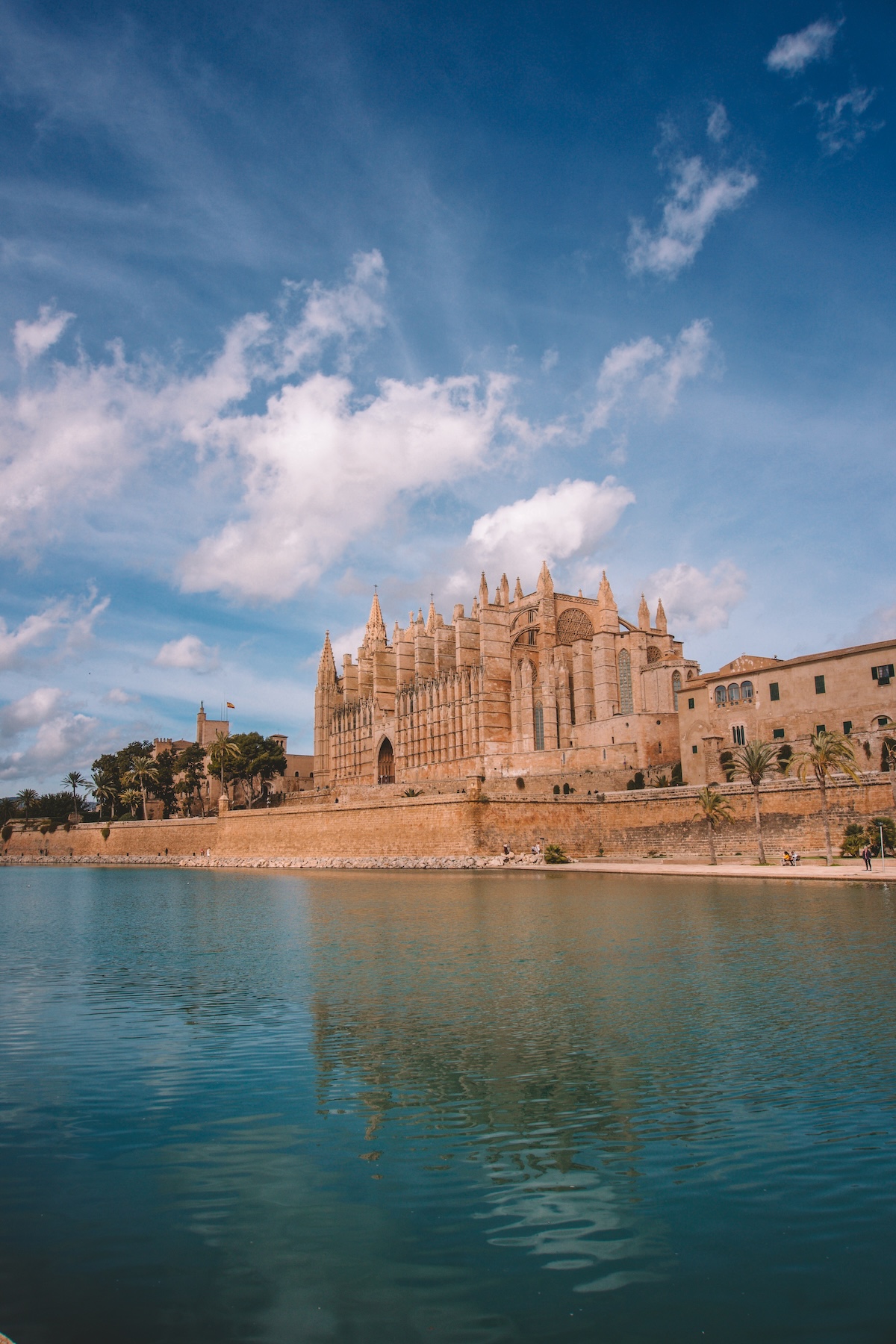
The Spanish island of Mallorca seemingly hibernates in the winter.
In the smaller villages and resort towns that cater primarily to tourists, you’ll see vacation properties boarded up, restaurants closed for the season, and there’s a general atmosphere of peace and quiet over those parts of the island.
Not in Palma! In spite of the cooler temperatures, Palma de Mallorca remains awake and alert all winter long, despite having far fewer visitors clogging its streets.
A winter visit to Palma won’t include any time at the beach, but there’s still plenty to do and see. From museums to good food to stunning architecture, Palma’s got it all!
Let’s dive into the top things to do in Palma de Mallorca in the winter.
Table of Contents
Click “show” to see the full table of contents for this post. You can jump around the post as desired by clicking on the individual sections listed below.
Traveling to Mallorca This Winter? Use This Itinerary!
Palma is just one of the many incredible places to visit in Mallorca during the winter! I have a super detailed 5-day Mallorca winter itinerary that takes you to the prettiest villages, hiking trails, and more. Definitely check out that itinerary for help planning your visit.
I also have a detailed 1-day Palma itinerary that helps you make the most of your visit to Mallorca’s capital city!
Visit the Catedral de Mallorca (Palma’s Cathedral)
Winter opening hours (November – March): 10am to 3:15pm Monday – Saturday; closed on Sundays
Cost: 10 Euros (grants access to the cathedral and the Museum of the Sacred Arts; book tickets here)
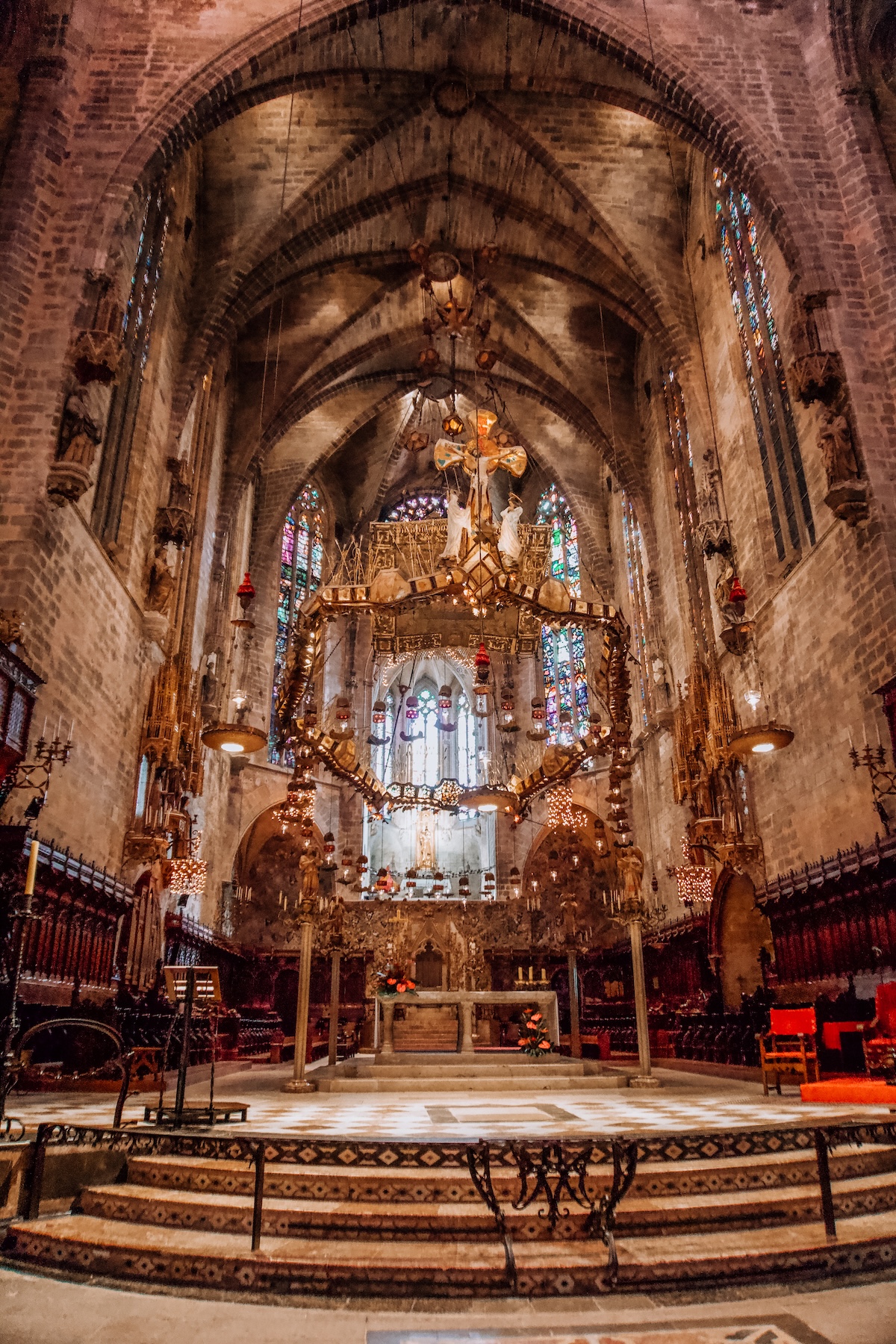
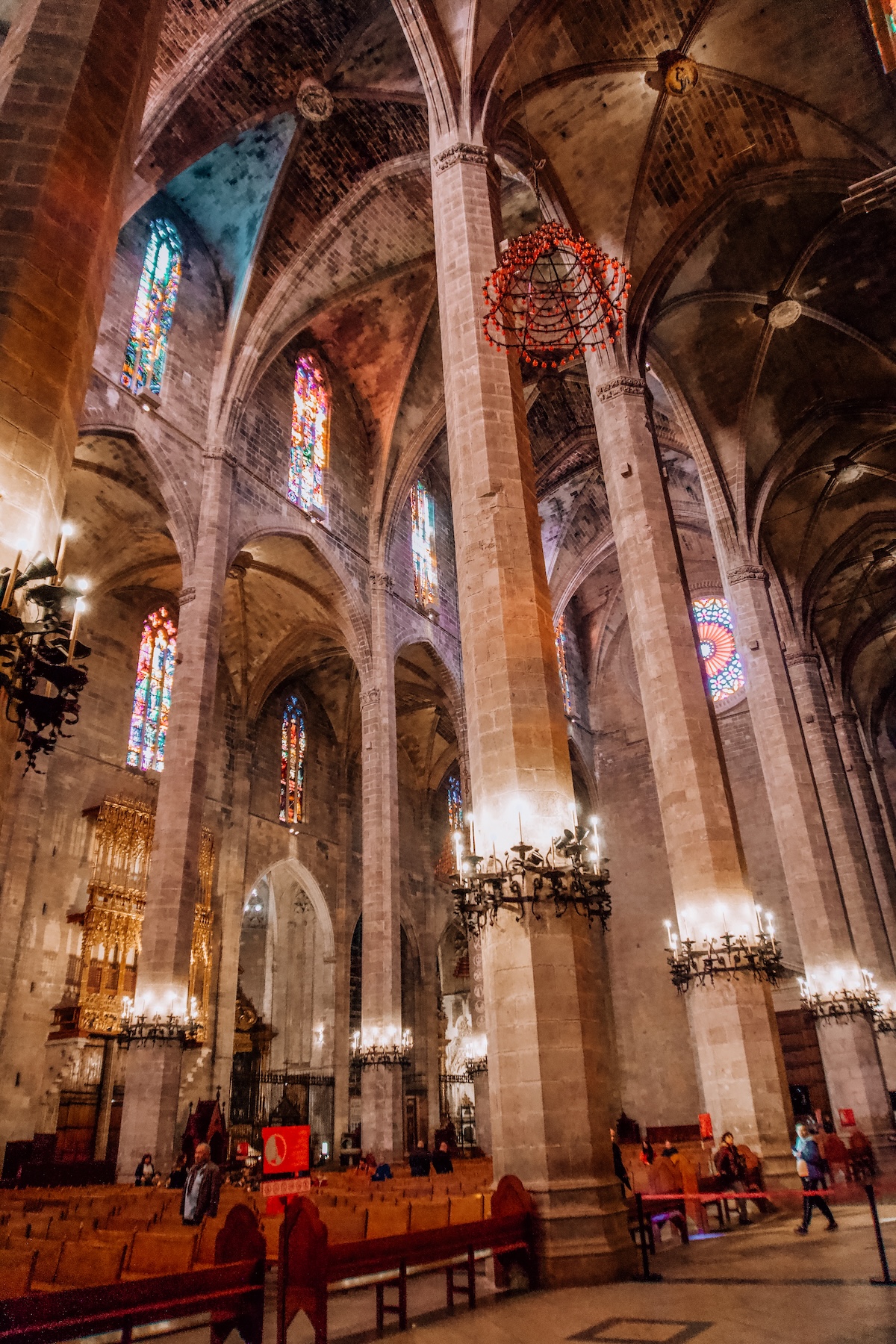
Called “La Seu” by the locals, Palma’s Cathedral is an architectural masterpiece. Building began in the 1200s and the project wasn’t completed until the early 1600s.
Because of this, the interior of the church has ornate Baroque elements, while the exterior is Gothic in style.
Thanks to ongoing restorations over the centuries, the Cathedral continues to evolve in style. In the early 1900s, architect Antoni Gaudi — best known as the genius behind La Sagrada Familia in Barcelona — redesigned the Chapel of the Holy Trinity, giving it a modern appearance.
A visit to La Seu is a feast for the eyes and is a must-see attraction during the winter!
Take in the Views from Parc de la Mar
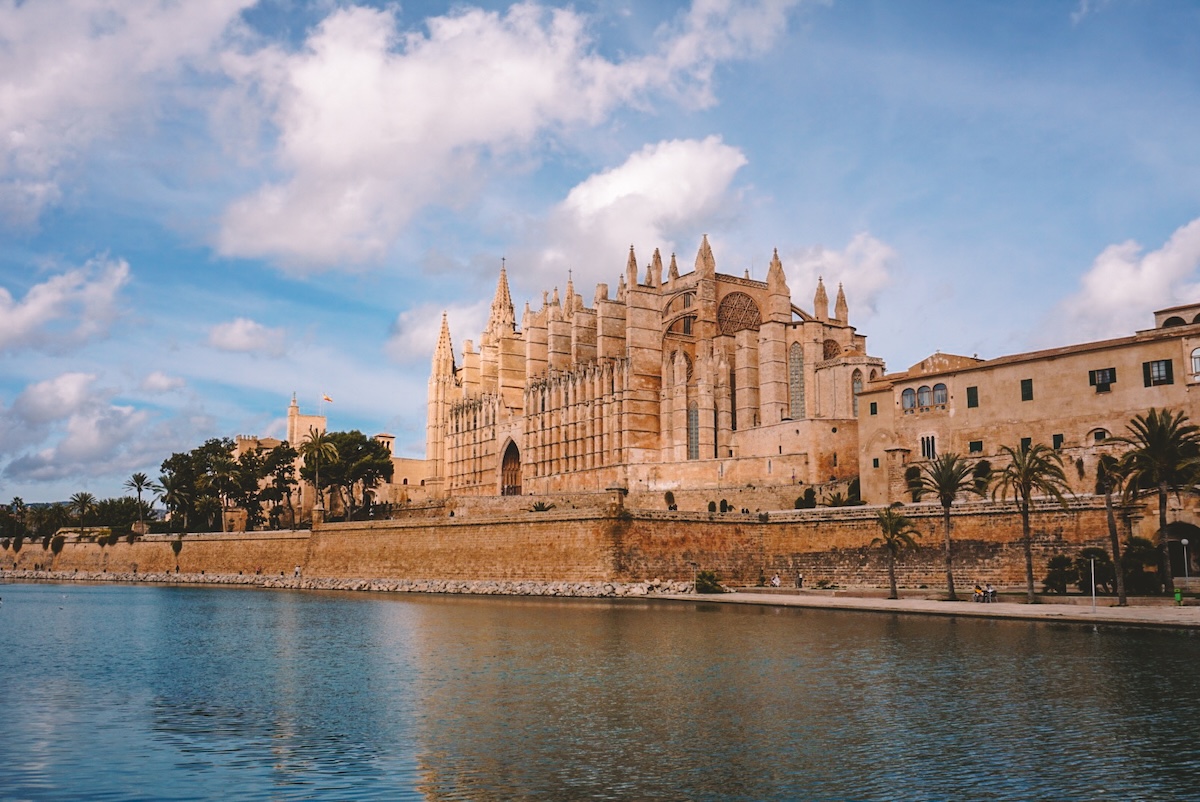
A shady oasis near the Bay of Palma, the Parc de la Mar is covered in palm trees and offers a breathtaking view of the cathedral.
Until the 1960s, the Bay of Palma reached all the way to the cathedral and wowed visitors with its reflection.
When the busy Avenida Gabriel Roca road and promenade was put in, the salt water pond of the Parc de la Mar was installed so that the cathedral didn’t lose its beautiful reflection.
I loved seeing the cathedral from the park and imagine that this would be a wonderful place to sit in the sunshine with a good book on a Mallorcan winter day.
Tour the Royal Palace of La Almudaina
Winter opening hours: 10am to 6pm (Closed Mondays)
Cost: 7 Euros to enter + 5 euros for an optional audio guide (book tickets here). FREE entry is granted on Sundays and Wednesdays between 3pm to 6pm.
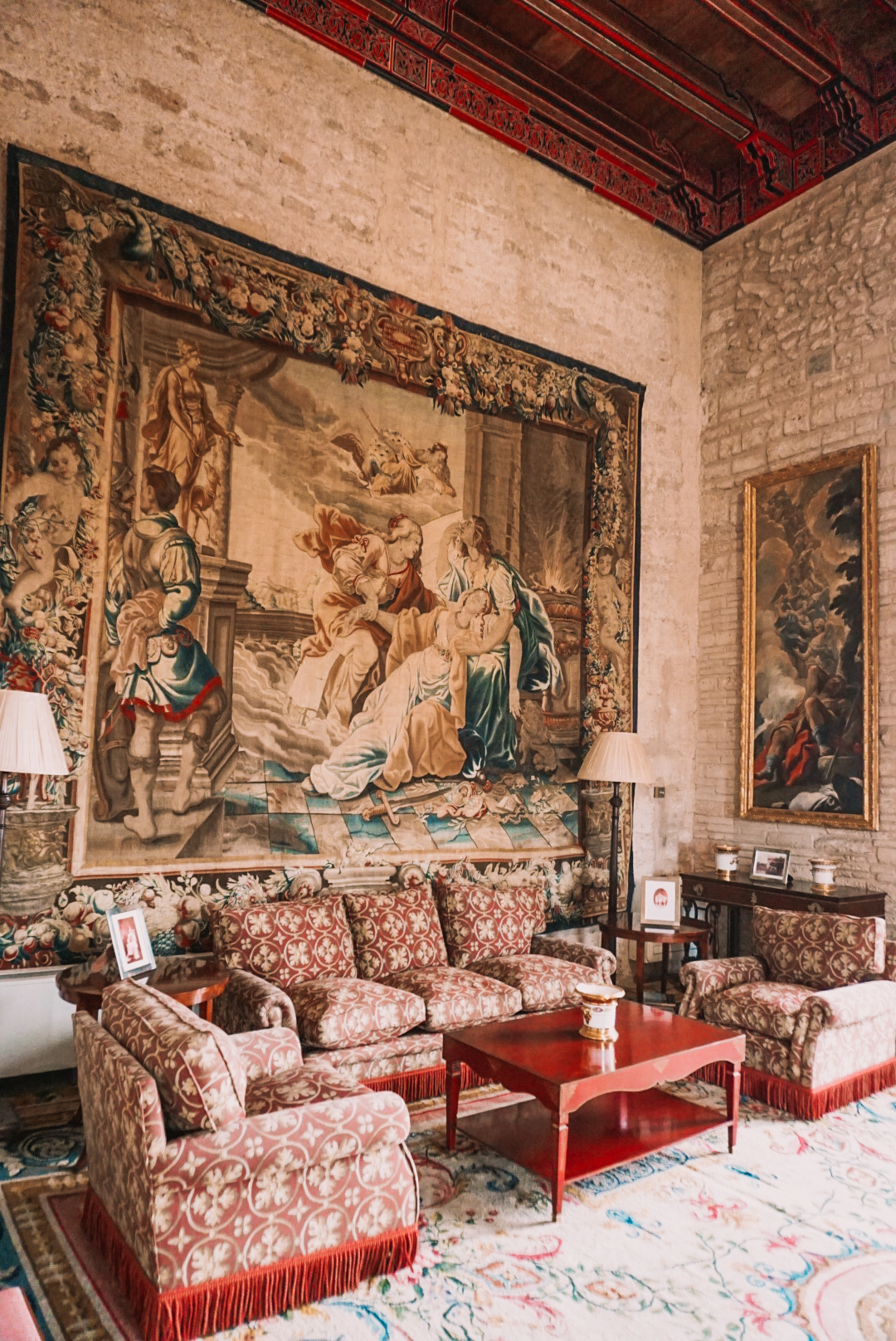
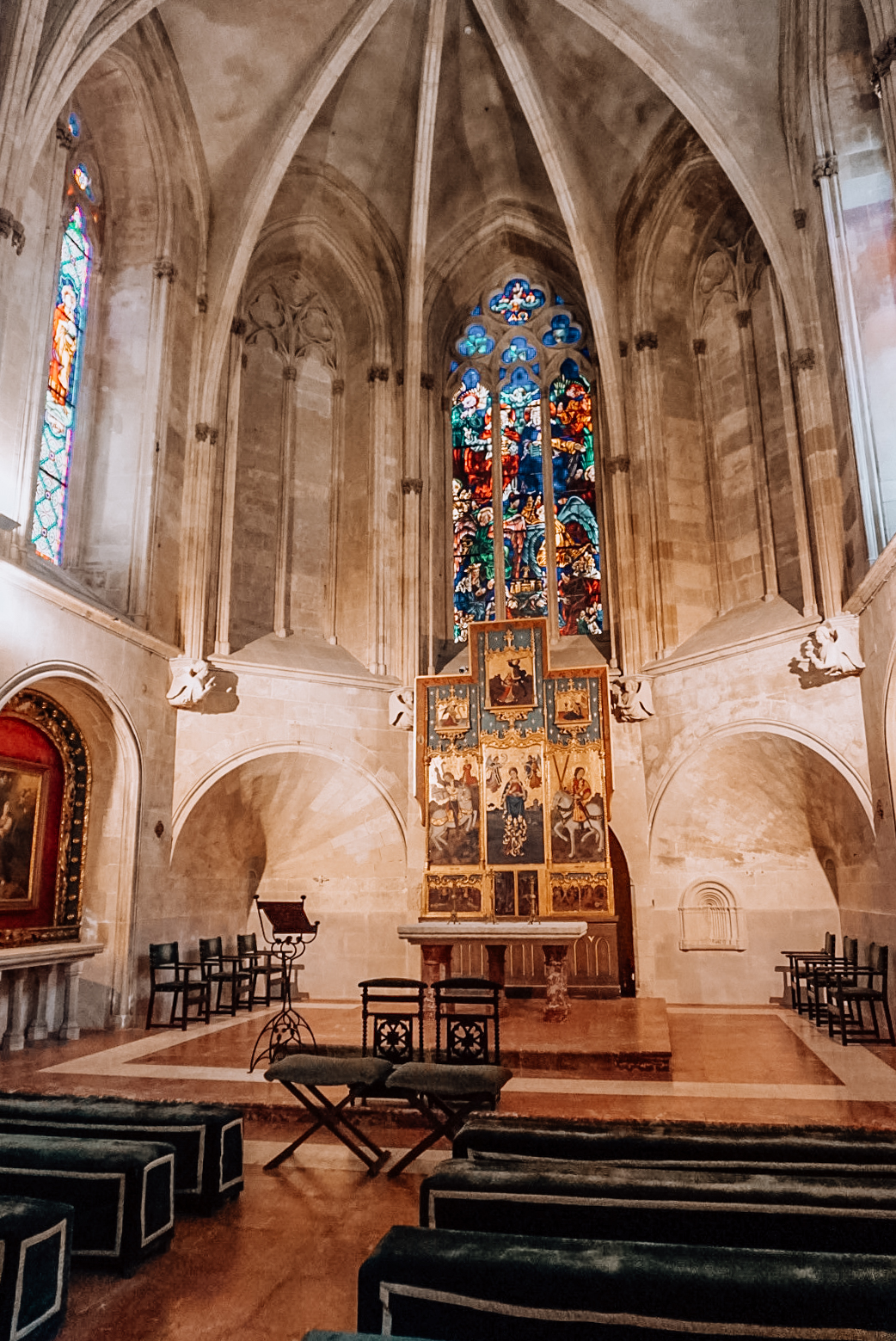
Now the residence of the king and queen of Spain, La Almudaina was originally built and used by the Moors. When Mallorca was overtaken by the Christians in the 13th century, the palace was redesigned to reflect the taste of its new rulers.
I strongly suggest paying extra for an audio guide to make the most of your visit to the royal palace.
During your self-guided tour, you’ll see the royal apartments (my favorite section!), the Chapel of Santa Ana, the former Arab baths, and more.
Claire’s Tip: If you’re on the fence about visiting the palace, I recommend touring on a Wednesday or Sunday during their free admission hours.
Visit the Former Royal Gardens
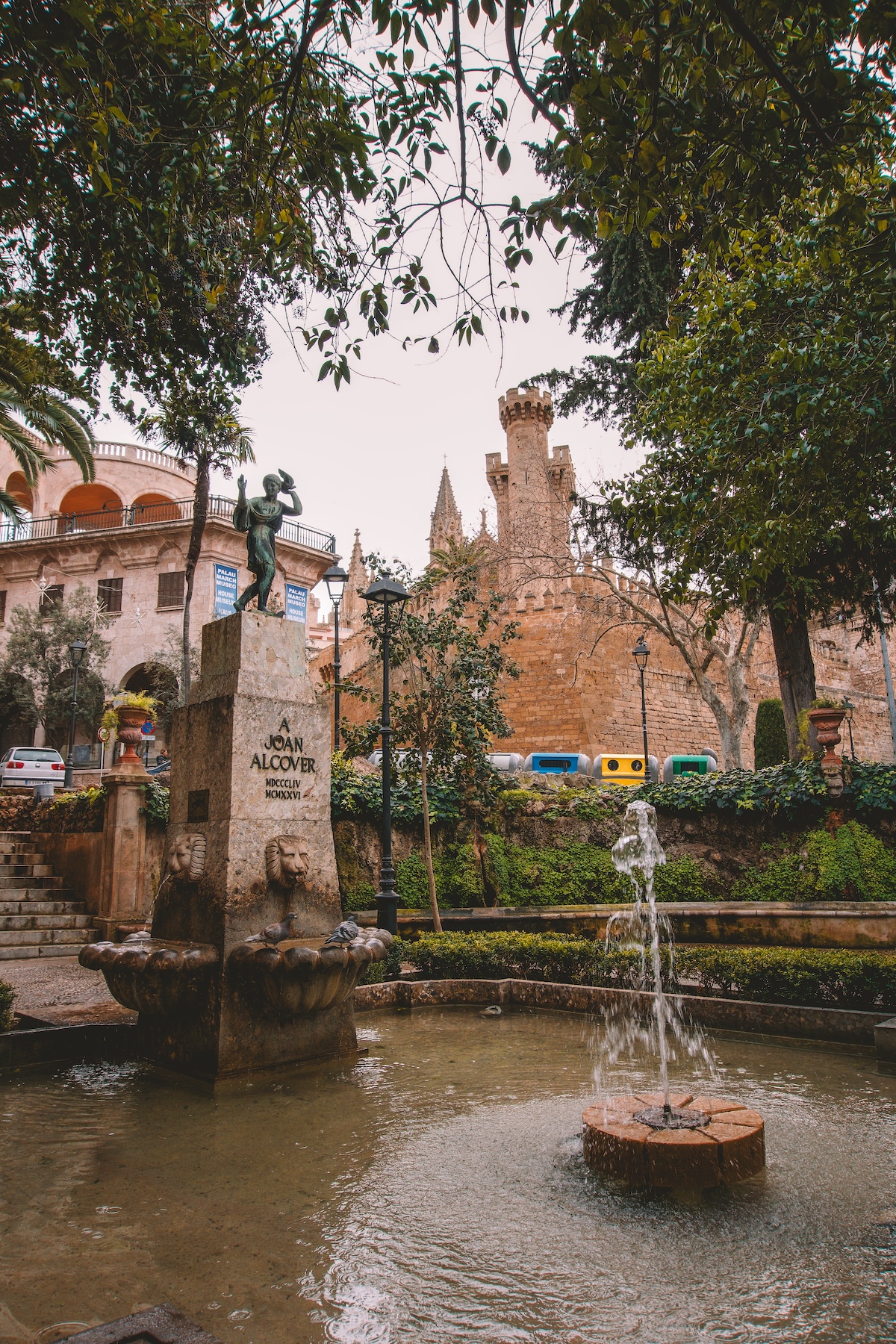
The former King’s Garden, L’Hort del Rei, is located on the west side of the royal palace.
Once upon a time, this was a medieval garden filled with fruit trees and herbs. The lush garden you see today was designed in the 1960s and takes inspiration from the Moorish gardens of Andalusia in southern Spain.
The park is dotted with trickling fountains, and vine-covered pergolas provide a shady respite from the strong Mallorcan sun. (Yes, it can get overly warm even in the winter!)
Explore the Old Town
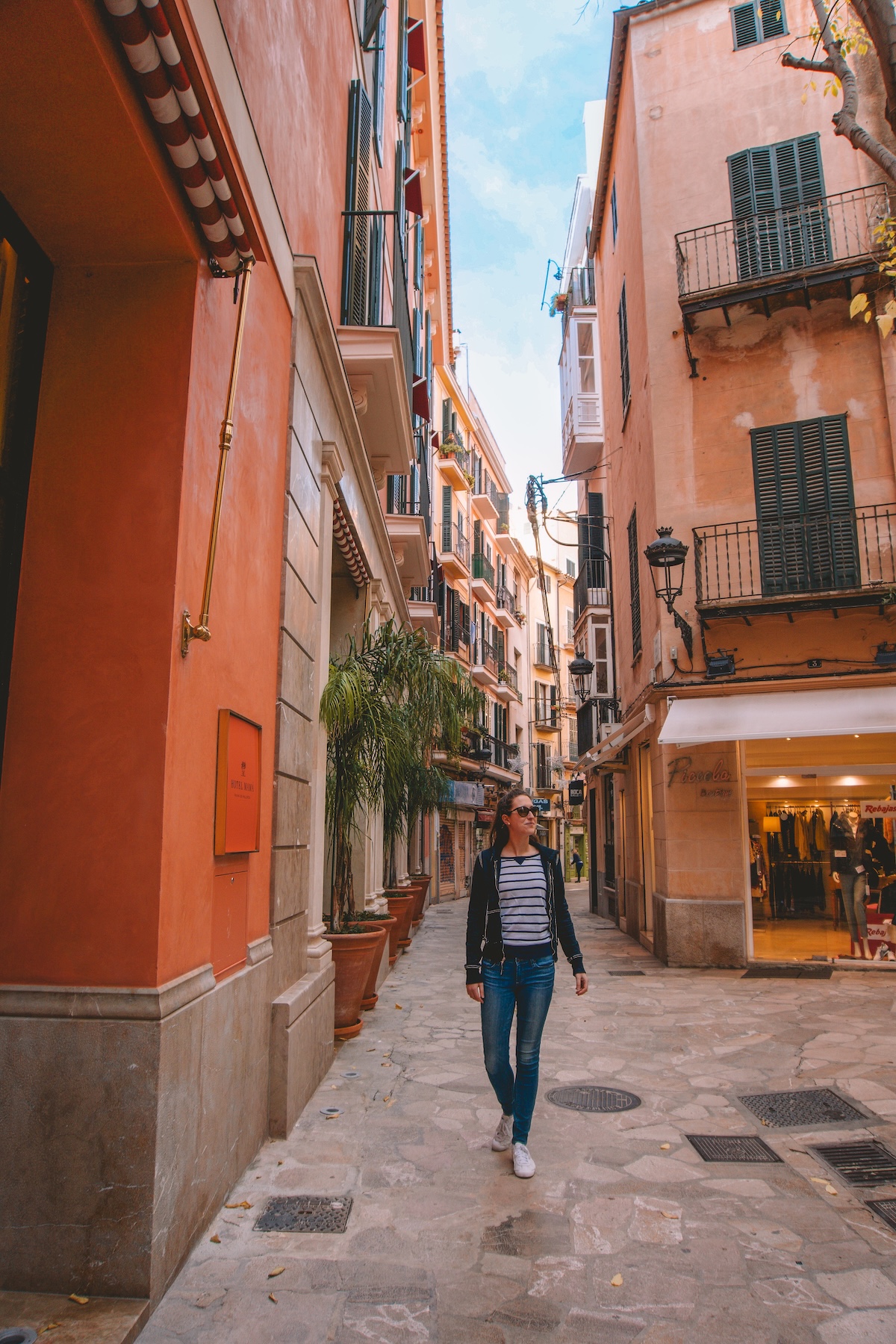
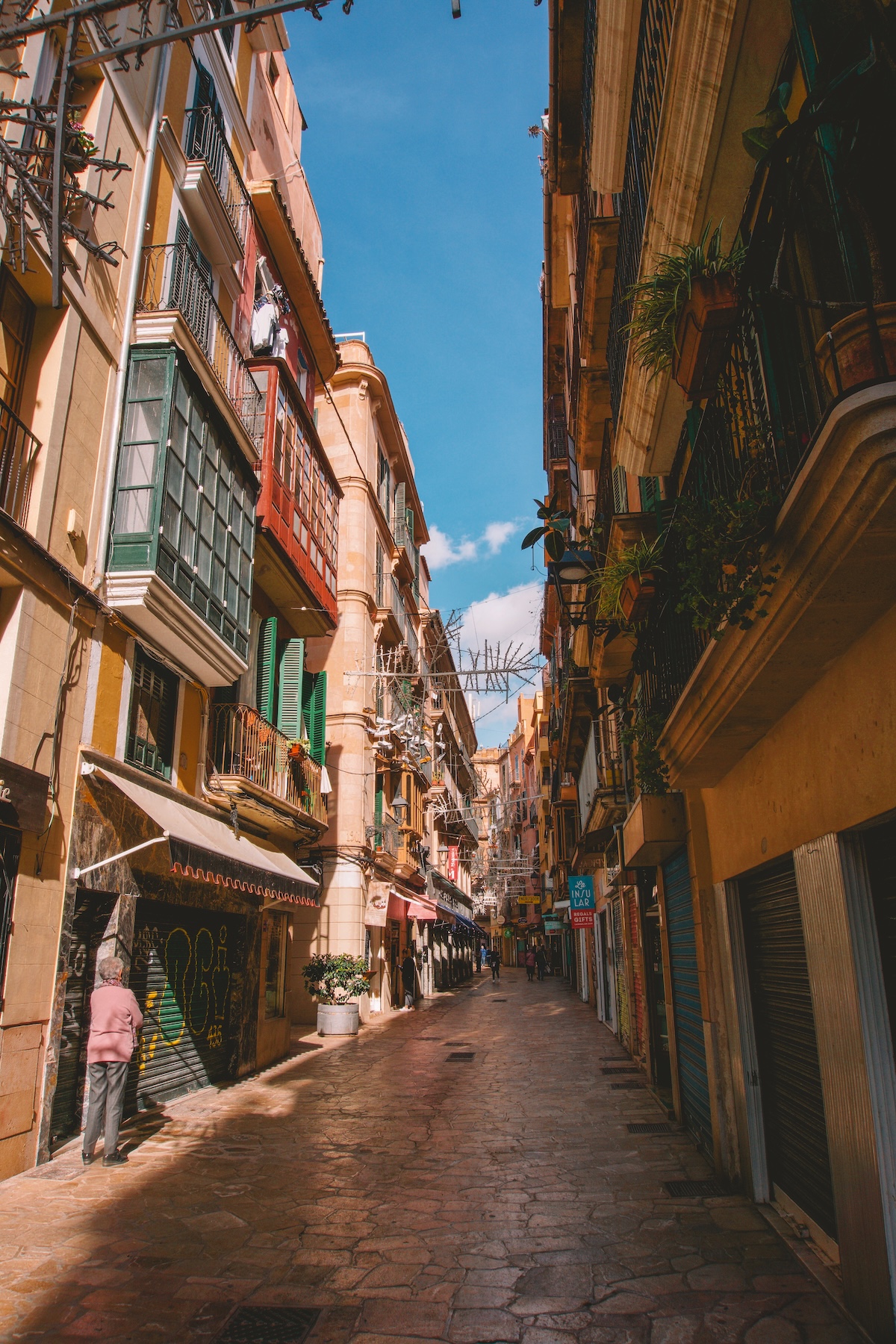
Palma’s Old Town is smaller than it looks on a map, but it’s still a wonderful place to get lost in.
There are cute alleyways galore cutting through the major thoroughfares, plus hidden squares where locals congregate to chat and smoke cigarettes in peace.
Most of the streets meet at the central square, Plaça Major, but pick anywhere you’d like to begin your adventuring. (Plaça de Cort is another lovely square with a 600-year-old olive tree and the Town Hall.)
There’s a decent variety of local boutiques and larger chains represented in the Old Town, plus countless restaurants and bakeries.
Stroll Along the Waterfront
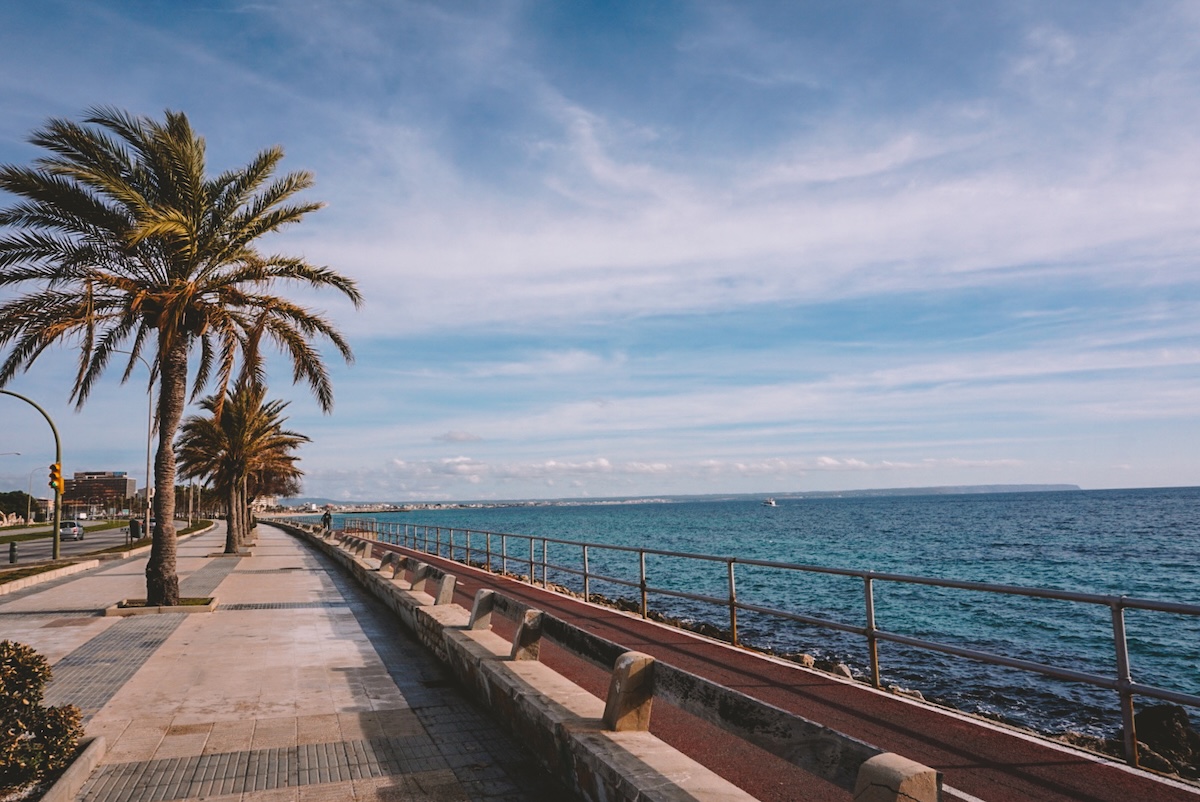
Even in the wintertime, walking along Palma’s waterfront (called the Paseo Maritimo) is pure bliss.
You can easily access the waterfront walking and biking path from the cathedral or royal palace. From there, you can walk in either direction — just pick whichever way looks prettier to you!
There’s a decent stretch of beach near the cathedral as well as ports on either side.
Claire’s Tip: If you’re not up for a long walk, there are benches along the path as well. Pick a spot looking out at the water, because how often do you have a view like that?
Shop Your Way Down Passeig del Born
The tree-lined Passeig del Born is one of the busiest shopping streets in Palma. In the winter, the trees are bedecked with string lights that provide a gentle glow in the evenings.
You’ll find larger chains ranging from Zara (located within a former cinema) to Louis Vuitton along this street, and it’s a great place to window shop.
Claire’s Tip: If you enter the Passeig del Born from the Plaça de la Reina, you’ll pass through the two sphinx statues that guard the entrance to the tiled shopping boulevard.
Eat Palma’s Local Dishes
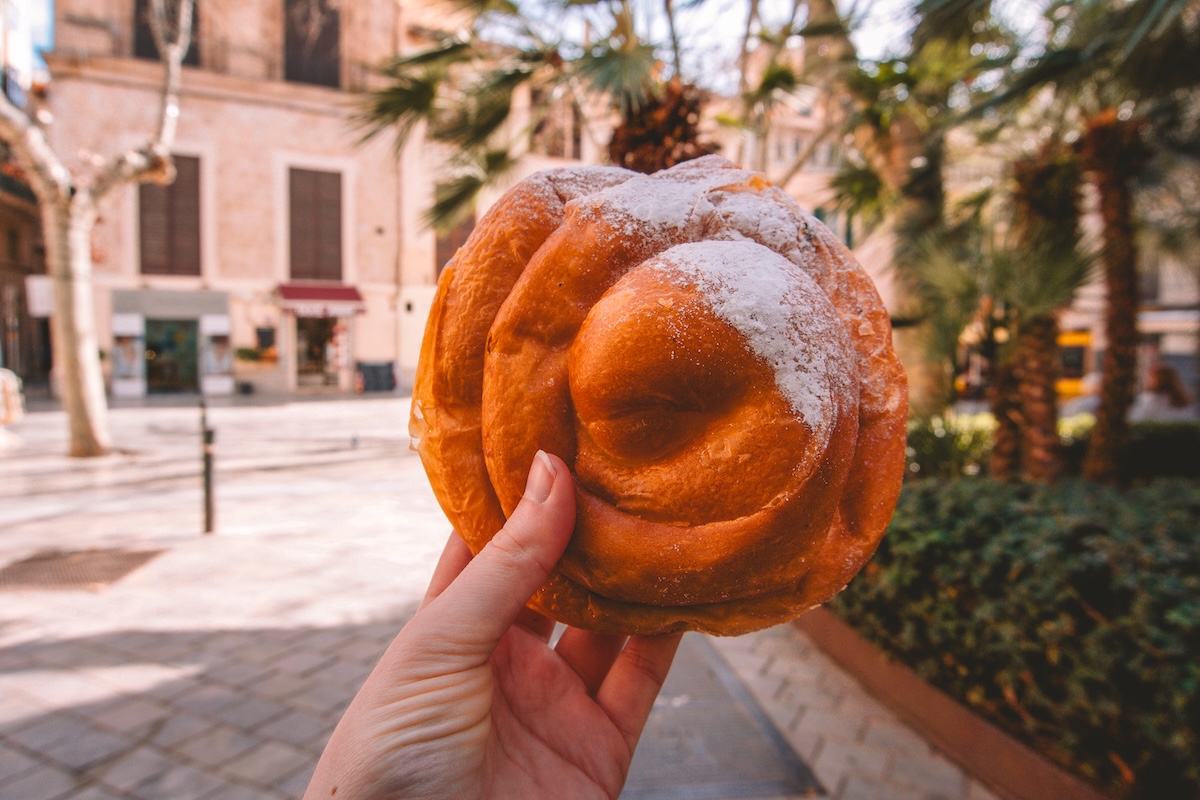
The best part of any vacation is sampling the local cuisine. In Mallorca, you’ve got lots to choose from: Spanish dishes from the mainland, specialty baked goods unique to Mallorca, plenty of pork and seafood from the region, and more.
One of the most popular Mallorcan foods is ensaimada, a spiral-shaped sweet bread that’s similar in taste and consistency to French brioche. On its own, ensaimada is rather plain. But when doctored up with butter and jam, or any of the numerous fillings you can find at one of Palma’s bakeries, it’s a real treat.
Another classic Spanish dish to try is an empanada, which is a large pocket of dough that’s been stuffed with a savory or sweet filling.
When I visited Mallorca, I was traveling on a budget so I tried more breads and pastries from local bakeries rather than savory mains at restaurants.
Claire’s Tip: If you’re a huge foodie and want to really dive deep into Palma’s food scene, sign up for a 3-hour food tour of the Old Town. There are also Spanish cooking classes offered in Palma, which would be great for solo travelers and families alike.
Grab Lunch at Mercat de l’Olivar
Winter opening hours: Monday – Thursday 7am to 2:30pm, Friday 2:30pm to 8pm, Saturday 7am to 3pm (closed Sunday)
Yes, there’s even more good food to be eaten in Palma!
Another favorite winter attraction of mine is the Mercat de l’Olivar. It’s a bustling market hall that’s stuffed with stalls selling local produce, seafood, tapas, and more.
The market closes mid-afternoon, so make sure to get there early enough to buy some local ingredients or eat at one of the restaurant stalls.
Spend the Day at a Luxury Hotel’s Spa

If your winter holiday to Palma coincides with one of the few rainy days of the season, consider treating yourself to a relaxing spa day at one of the city’s luxury hotels.
Nope, you don’t have to be a guest to take advantage of a hotel’s pool or spa!
Some of the high-end hotels let you book day passes that grant you access to their best facilities. Certain day passes are all inclusive with unlimited food and drink, some include just lunch, and others only grant you access to the pool and / or spa.
A couple hotels that I know have day passes include Iberostar and HM Palma Blanc.
Claire’s Tip: Book directly through the website of the hotel you’d like a day pass for rather than via a third party portal. I’ve read quite a few negative reviews from people who had issues booking day passes through a third party website.
Explore Castell de Bellver
Winter opening hours (October – March): 10am to 6pm Tuesday – Saturday; 10am to 3pm Sunday; closed on Monday
Cost: 4 Euros
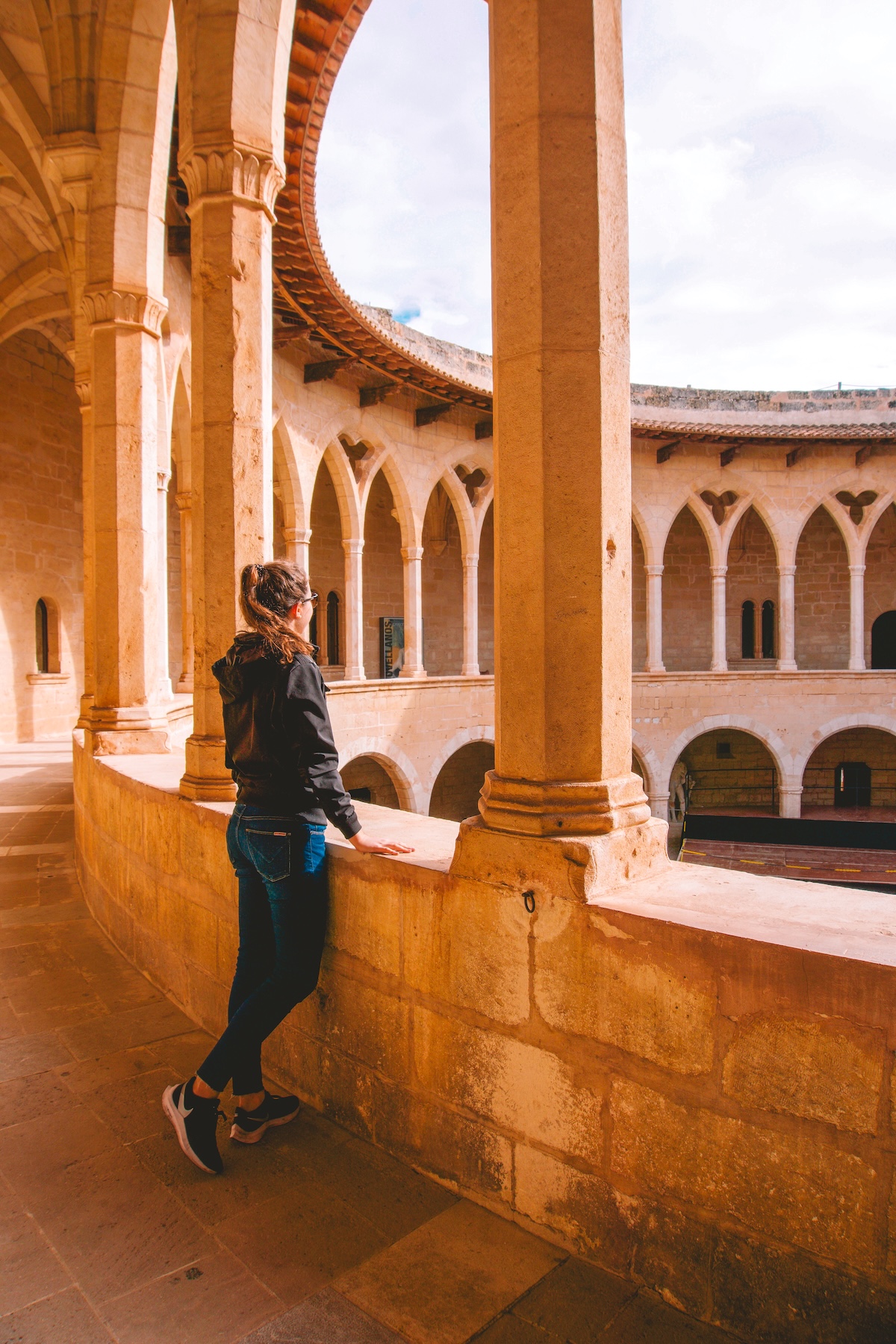
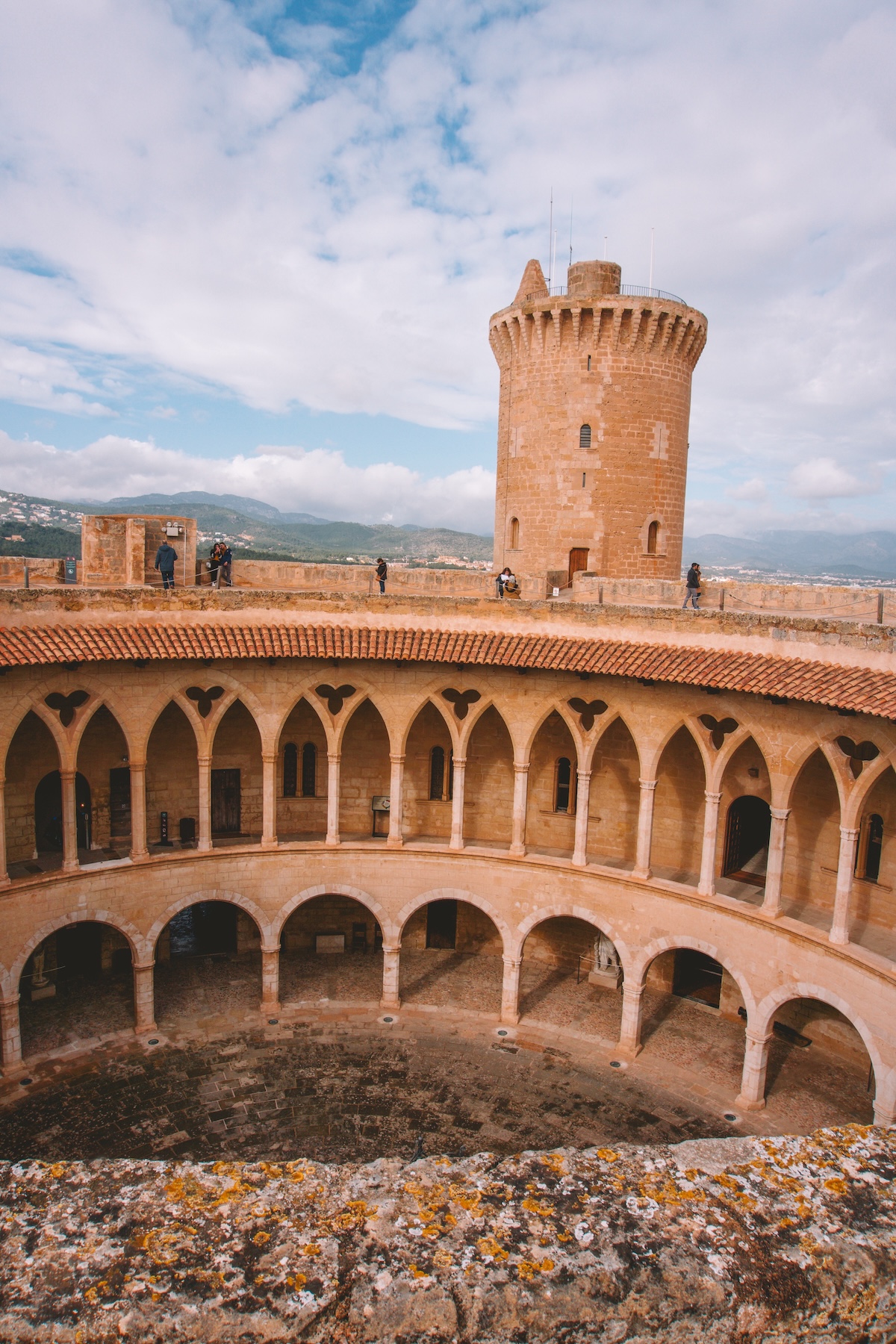
This last winter activity in Palma de Mallorca isn’t exactly in Palma, although it’s darn close.
Bellver Castle was built in the 14th century by King James II of Mallorca as his main residence. It was later used as a military prison, and is now open to the public as a history museum.
From the top of the castle, you can see all of Palma and much of the surrounding area. You’ll want to give yourself about an hour to go through the castle, read the displays, and take pictures.
Claire’s Tip: To visit the castle, either drive up to it and park along the road, or park your car at the base of the hill the castle is perched on and walk up through the pine forest to get to it.
Take a Walking Tour
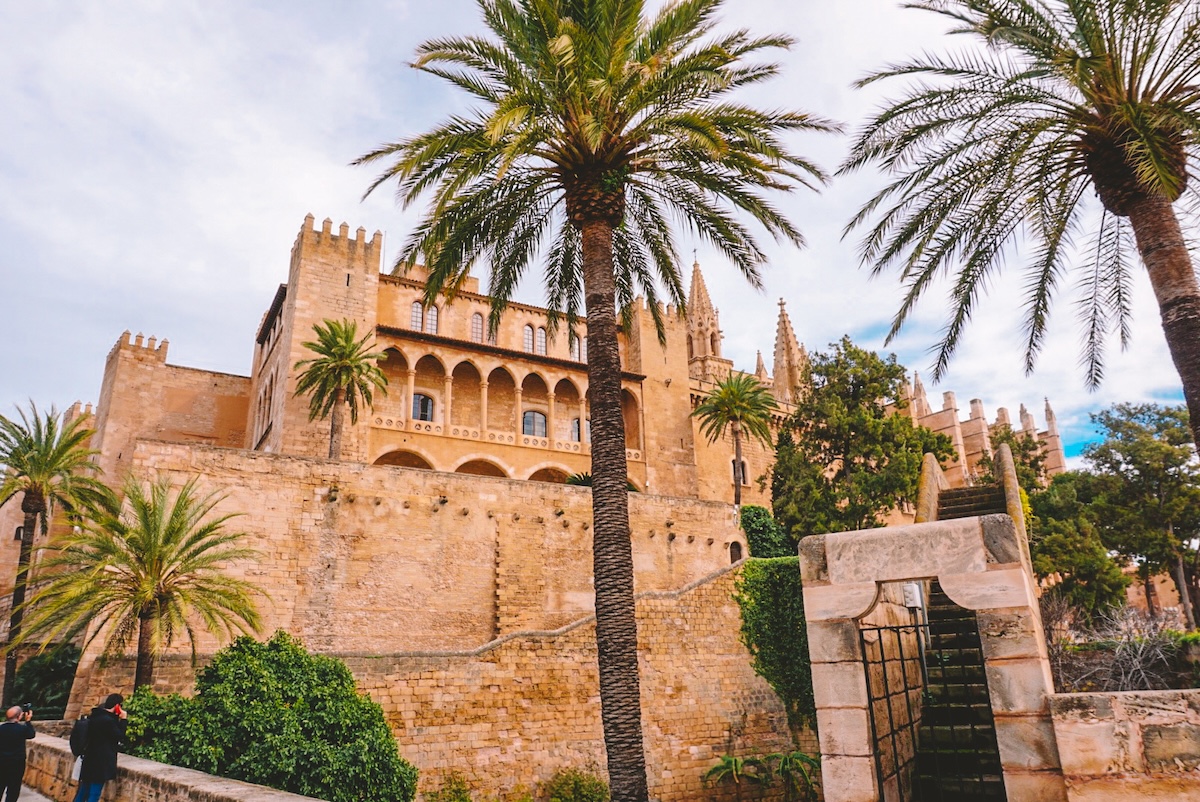
If you just read through this guide and immediately wondered how you’d see everything in one day, I suggest booking a walking tour of Palma.
After just a couple hours with a local tour guide, you’ll have a better understanding of Palma’s fascinating history as well as its main attractions.
This 2-hour walking tour of the Old Town would be the perfect place to start, or sign up for this atmospheric evening tour to see the city at night.
There are also free walking tours of Palma for those of you traveling on a budget!
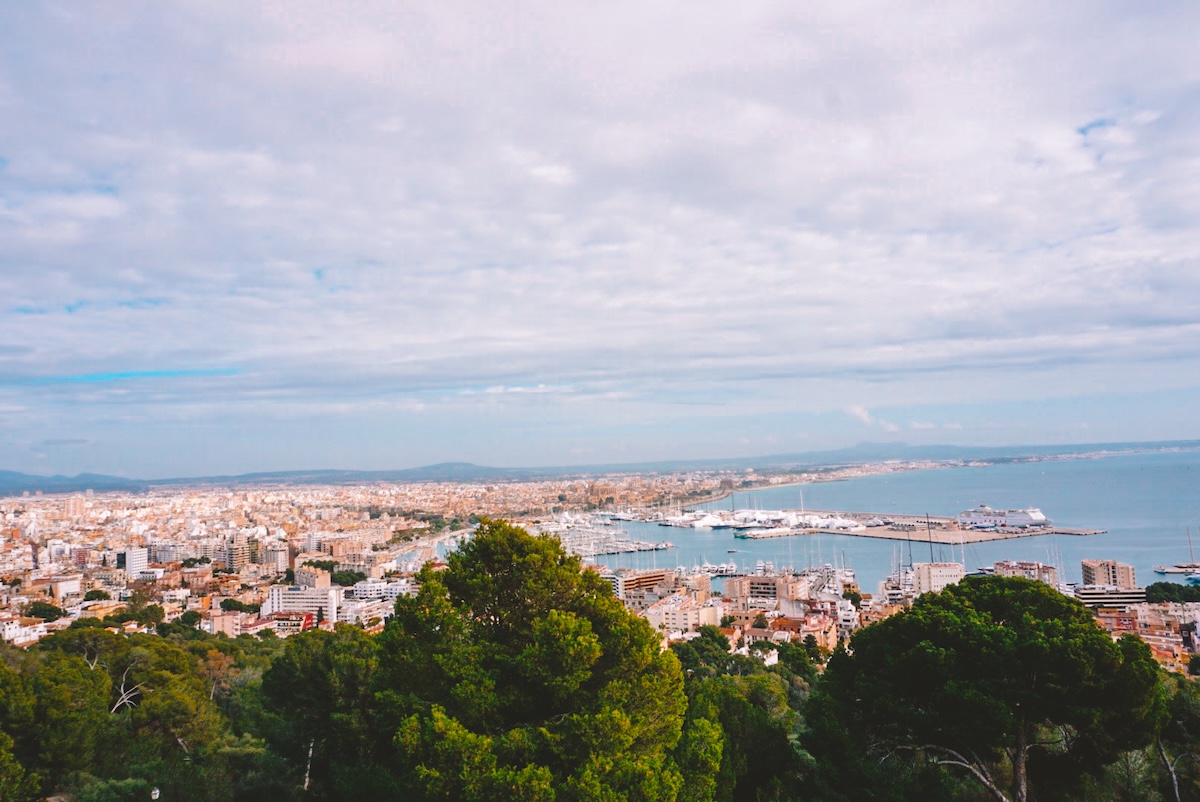
Frequently Asked Questions
I think one full day in Palma is perfect for seeing the sights and soaking up the sunshine.
If you’re on a tight schedule and want to do everything in an afternoon, you probably could since most of the main attractions sit right next to one another. But I think enjoying things at a leisurely pace is the better way to go!
Palma is a very walkable city, so I suggest wearing a comfortable pair of shoes and exploring on foot.
However, there’s also a sightseeing Hop On, Hop Off bus tour you can buy tickets for if walking everywhere isn’t an option for you.
I typically check Booking.com to see what hotels have the best prices and ratings, otherwise here are some options:
Budget: Fil Suites
Budget: MHOUSE Boutique Hotel Palma
Mid-range: Hotel Almudaina
Mid-range: Puro Grand Hotel
Mid-range: Concepcio by Nobis
Mallorca has about 300 days of sunshine per year, so you shouldn’t have much — if any — rain.
Definitely pack some layers because the mornings and evenings are chilly (around 45ºF/ 8ºC), but days are warmer (60ºF / 15ºC).
If you need help narrowing down this list of activities to the key few, I recommend the cathedral, royal palace, and Old Town. You can fill in your adventures from there!
Excited to See Palma de Mallorca on Your Winter Holiday?
Now that you know what to do in Palma de Mallorca in the winter, I hope you can plan your upcoming trip more easily!
I can’t emphasize enough how beautiful this Spanish island is.
I feel like most Europeans have heard about Mallorca, but none of my American friends knew it existed, so definitely add it to your bucket list if this is your first time reading about it.
Don’t forget to follow me on Instagram to keep up with my daily adventures in Berlin and beyond!

Comments & Reviews
“most villages in Mallorca hibernate in the winter. Vacation properties are boarded up,”
What Mallorca are you referring to? The tourist resorts mostly close down in winter. But it’s the villages that stay open and active year round. The only thing different from summer to winter is the weather.
You should try it sometime. You might be surprised.
Interesting, that wasn’t my experience at all! We traveled around the island quite extensively and the villages were all very quiet. Many of the restaurants were closed, and lots of the shops had limited opening hours or were closed entirely for the season. We loved it though! Mallorca really blew us away.